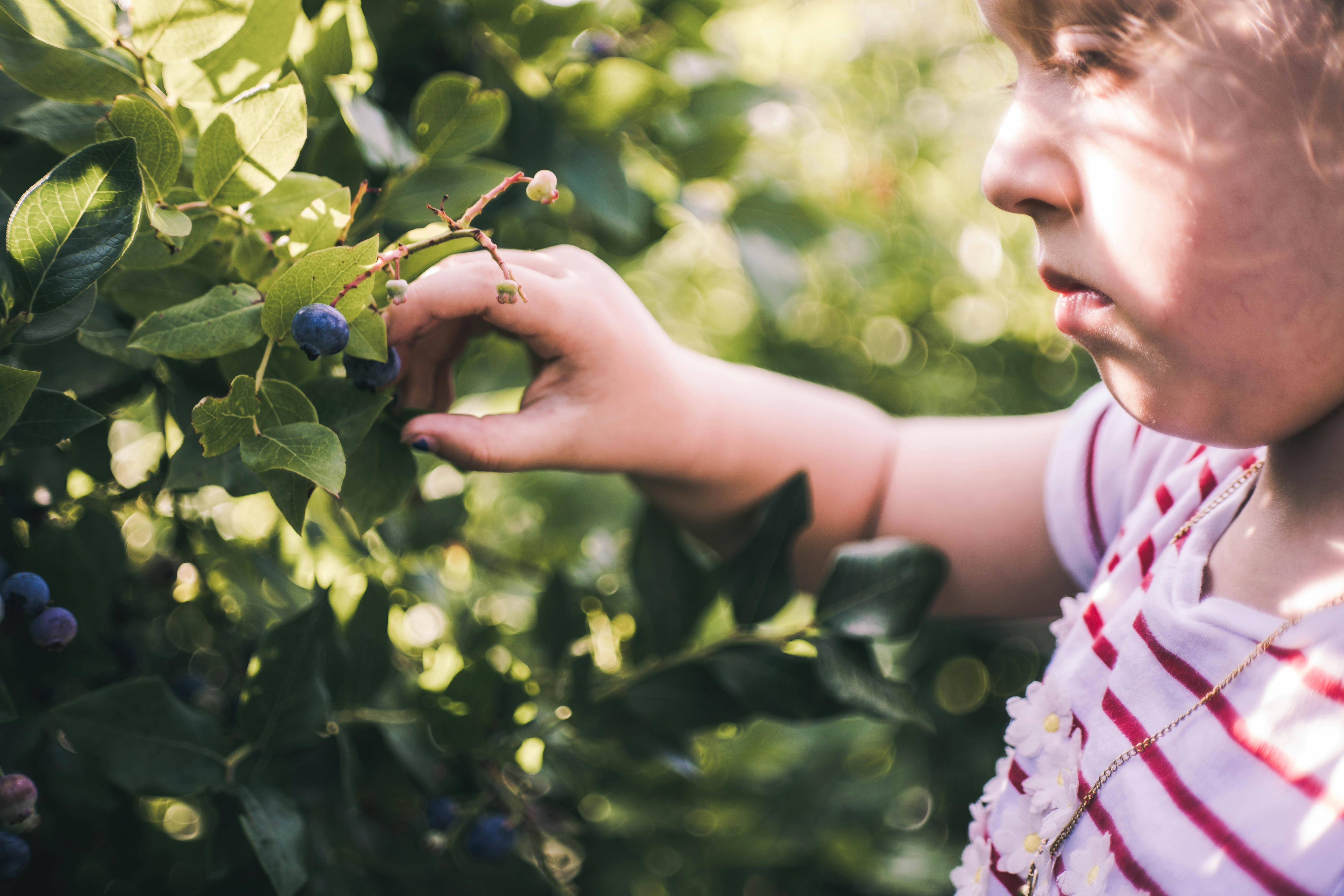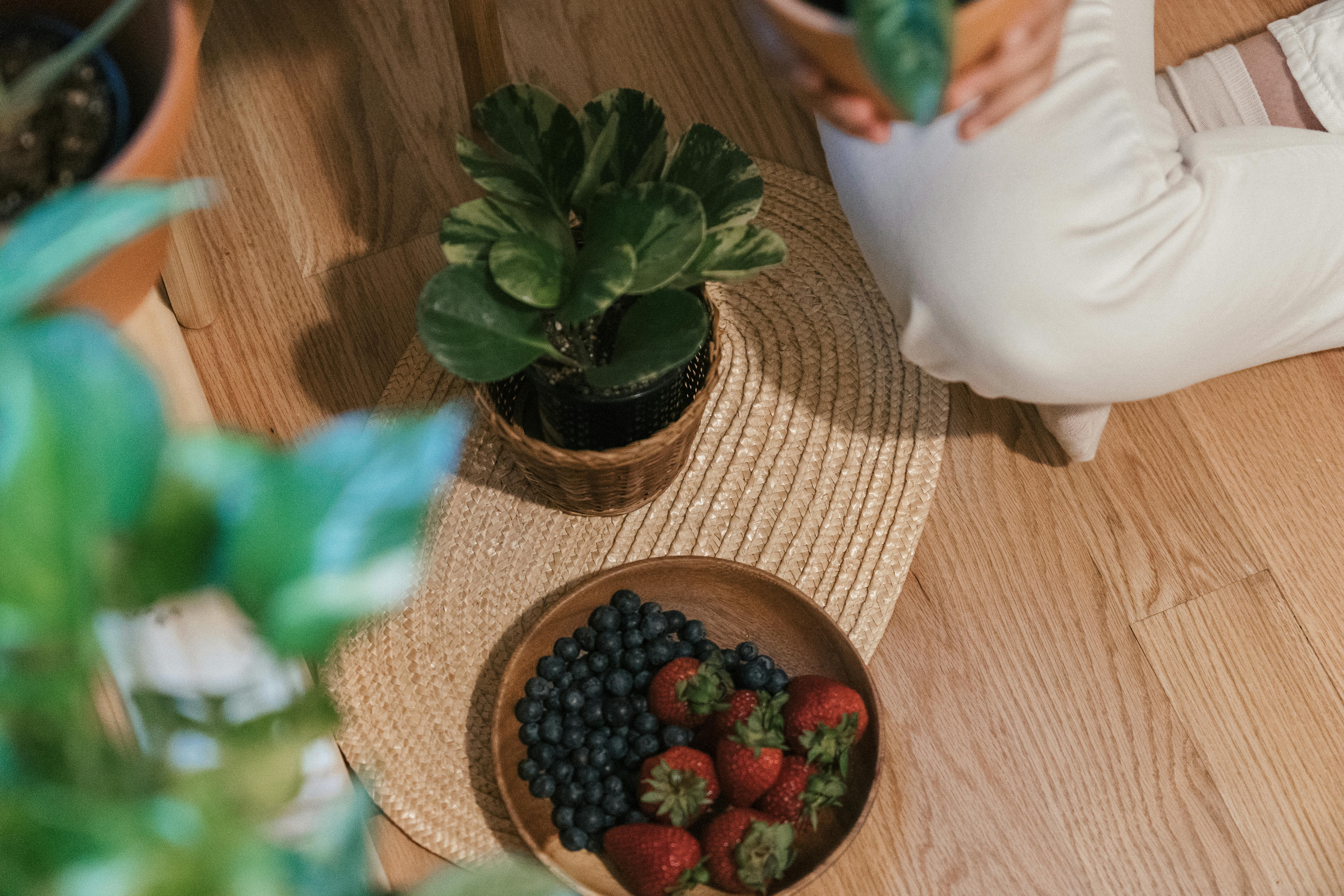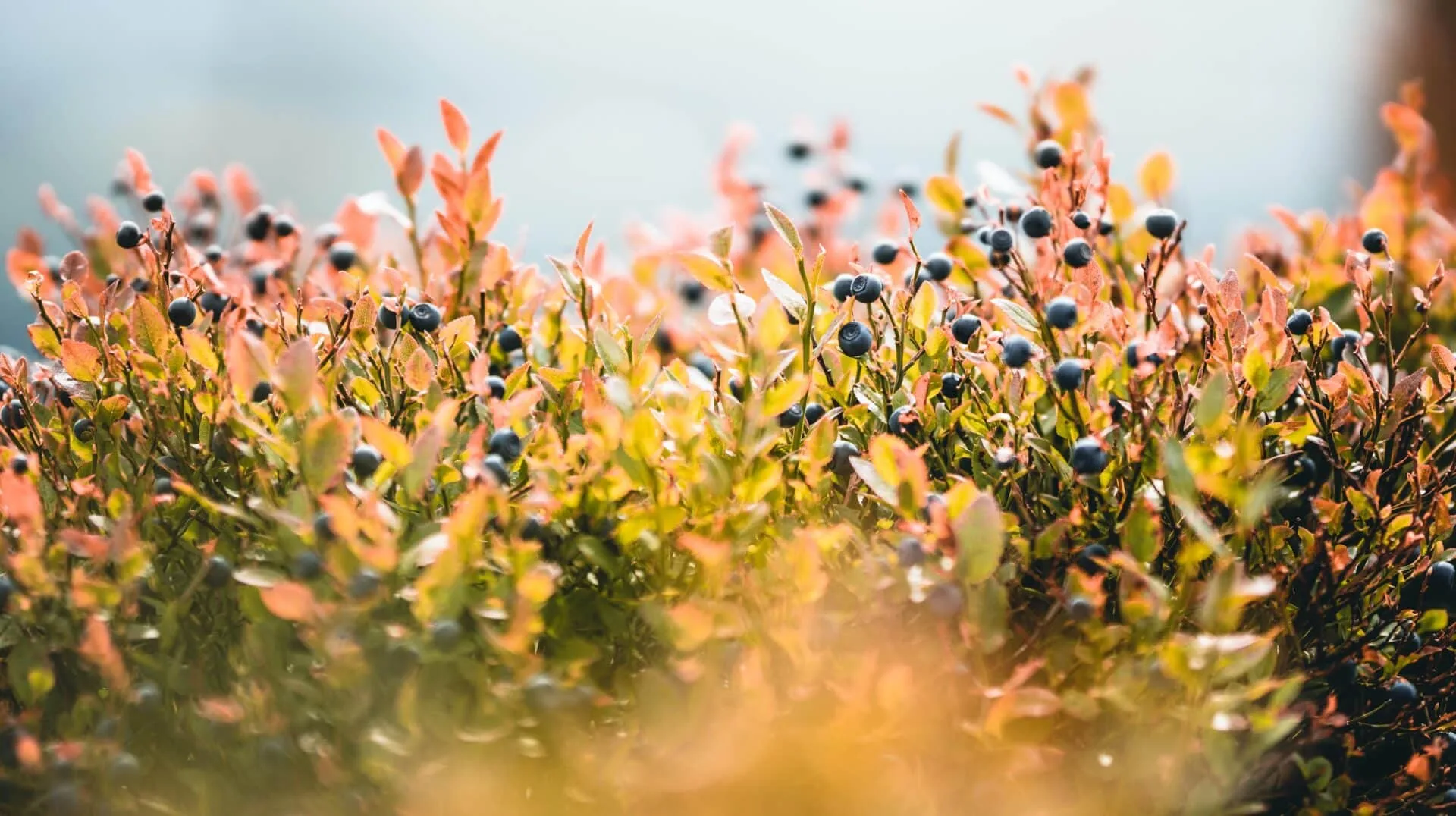Blueberries are a delicious and nutritious fruit that can be enjoyed fresh, frozen, or cooked. They are also easy to grow in the home garden and can provide a steady source of fresh produce throughout the growing season. But what plants should you consider planting next to blueberries? Depending on your climate, soil conditions, and gardening goals, there are a number of different options available for companion planting near blueberries.Plants that thrive next to blueberries include raspberries, blackberries, strawberries, huckleberries, and currants. Other companion plants for blueberry bushes include woody shrubs such as azaleas, rhododendrons, and mountain laurels. Bulb plants like daffodils and daylilies also work well as companions for blueberry bushes. Finally, herbs like oregano and thyme also make good companion plants for blueberry bushes.
Plants That Grow Well Near Blueberries
Blueberries are a great addition to any garden and can provide a tasty snack or topping to any meal. But did you know that there are certain types of plants that grow particularly well near blueberry bushes? Below is a list of plants that will thrive when planted in the same area as blueberries.
The first plant to consider is strawberries. Strawberries and blueberries both require similar soil conditions and watering schedules, making them perfect companion plants. Plus, their combined presence will make your garden look beautiful! Another great option is raspberries, which not only require the same conditions as blueberries but also produce delicious fruit.
Herbs are another excellent choice for growing near blueberry bushes. Chives, parsley, oregano, sage, and thyme all do well in the same soil and light conditions as blueberries. These herbs can be used to add flavor to dishes or even brewed into tea for a refreshing beverage.
Other plants that thrive when grown near blueberry bushes include rhubarb, currants, daylilies, and horseradish. Rhubarb is a great source of vitamin C and adds a tart flavor to pies and other desserts. Currants produce sweet berries that can be made into jams or preserves while daylilies add color and beauty to your garden. Finally, horseradish adds a spicy kick to dishes like mashed potatoes or macaroni salad.
When it comes time to planting your garden around your blueberry bushes, keep these plants in mind! With proper care and attention they will provide you with years of delicious fruits and vegetables that you can enjoy for years to come.
Evaluating Soil and Sunlight Requirements for Neighboring Plants
When growing plants in your garden, it is important to consider the soil and sunlight requirements of neighboring plants. Different plants require different conditions in order to thrive, so understanding the needs of each plant is essential. Evaluating soil and sunlight requirements for neighboring plants can help ensure that all of the plants in your garden are getting what they need to survive and thrive.
The first step in evaluating soil and sunlight requirements for neighboring plants is to determine the type of soil that is present in the area. Different types of soil can provide varying levels of nutrients, water drainage, and other factors that can affect a plant’s growth. It’s important to test the soil for its pH level and nutrient content before planting any new plants so that you know which type of soil is best suited for their needs.
Once you have determined the type of soil in your garden, you can then begin to assess the amount of sunlight each plant will need. Different types of plants require different amounts of sunlight, depending on their particular species. Consider where each plant will be planted when evaluating how much sun exposure it should receive. If a particular species needs more than six hours of direct sunlight per day, it may be best suited for a spot near a window or patio where it will get plenty of light throughout the day.
Finally, you’ll need to consider how much water each plant requires. Some varieties may need more moisture than others, so check the care label or ask an expert at your local nursery before planting any new varieties in your garden. By taking into account all these factors when evaluating soil and sunlight requirements for neighboring plants, you can ensure that all your garden’s inhabitants are healthy and happy!
The Benefits of Companion Planting with Blueberries
Companion planting with blueberries is an easy and effective way to improve the health, productivity, and flavor of your blueberry plants. It also helps to keep pests and diseases at bay. Companion planting involves planting different varieties of plants together to provide benefits for each other in terms of pest control, soil fertility, and increased yields. When companion planting with blueberries, there are a few key considerations.
One important consideration is that you should not plant other crops in the same bed as blueberries, as they can compete for resources such as light, water, and nutrients. Instead, plant companion plants around your blueberry bush to protect it from pests and diseases. For example, you can plant herbs such as garlic or basil that naturally repel insects near your blueberry bush to help keep pests away from the fruit.
You can also use companion plants to help increase the fertility of the soil around your blueberry bush. For example, legumes such as peas or beans have a symbiotic relationship with certain bacteria that allow them to fix nitrogen into the soil. This helps to provide essential nutrients for your blueberry bush that it wouldn’t otherwise get from the soil alone.
Finally, companion planting with blueberries can help improve their flavor by introducing beneficial insects into the area that feed on pest insects or pollinate flowers on nearby plants. These beneficial insects will then be attracted to the flowers on your blueberry bush and help pollinate them so they produce more fruit with better flavor.
Overall, companion planting with blueberries can be a great way to improve their health and productivity while also improving their flavor. It’s important to consider what types of plants you’re planting near your blueberry bush as some may not be beneficial or could even harm it if planted too close together. By following these simple tips, you can enjoy a bumper crop of delicious and healthy blueberries each year!
Perennials That Make Good Neighbors for Blueberries
Blueberries are a popular and delicious berry that not only tastes good but is also very nutritious. They are easy to grow and can be planted in most any soil type, making them a great addition to any garden or landscape. However, it is important to choose the right plants to put near blueberries as some plants can interfere with the growth and health of the blueberry bush. The best perennials to plant near blueberries are those that have similar soil needs, promote good air circulation, and do not compete with the blueberry bush for nutrients or water.
One of the best perennials to plant near blueberry bushes is clover. Clover helps improve soil fertility by adding nitrogen into the soil, which helps blueberries thrive. It also helps reduce weed growth by competing with other weeds for sunlight and space in the garden. Clover also has a shallow root system that does not compete with the deep roots of the blueberry bush for water or nutrients.
In addition to clover, other herbs like chamomile, lavender, and oregano make excellent companions for blueberry bushes as well. These herbs can help improve air circulation around the bush while also helping keep pests away from it. They also attract beneficial insects like bees and butterflies, which help pollinate flowers on both plants.
Lettuce is another perennial that makes a great neighbor for blueberries because it has shallow roots that do not compete with those of the bush for water or nutrients. Moreover, lettuce does not require much fertilizer or maintenance once planted so it won’t take away from essential nutrients needed by the blueberry bush either. Additionally, lettuce provides shade during hot summer days which can help protect young shoots from sun damage and encourage better growth of both plants.
Finally, raspberries make excellent neighbors for blueberries because they have similar soil needs and are very easy to care for. Raspberries can tolerate cold temperatures better than many other plants so they provide some protection from frost damage during winter months which can benefit both plants during extreme weather conditions. Raspberries also attract beneficial insects like bees and butterflies that can pollinate both plants as well as providing an extra harvest when they are in season!

Herbs, Shrubs, and Trees That Do Well Near Blueberries
One of the best things about having a garden that produces blueberries is the fact that you can pair it with other plants to create an attractive and productive edible landscape. To get the most out of your blueberry bushes, try planting herbs, shrubs, and trees that do well near them. These companion plants will help your blueberry bushes thrive while providing you with additional delicious fruits and vegetables.
Herbs such as thyme, oregano, mint, and chives are all excellent choices for growing near blueberry bushes. These herbs can help to repel pests from attacking your berry bushes while also adding flavor and fragrance to your garden. Planting them around the base of your blueberry bushes will provide protection from hungry animals and insects while also looking attractive.
Shrubs like currants, gooseberries, raspberries, elderberries, and honeysuckles are great choices for planting around your blueberry bushes. Not only do they look attractive when planted together but they also provide a variety of different berries for you to enjoy throughout the season. Planting these shrubs in clusters around the base of your blueberry bushes will create a beautiful edible landscape that will attract wildlife while providing you with plenty of sweet treats.
Trees such as apple trees or plum trees are good choices for planting near blueberry bushes as well. These trees can provide shade during hot summer days while also giving you an abundance of delicious fruit throughout the season. Planting these trees near your berry patch will create a shady oasis that both you and wildlife can enjoy together.
Overall, there are many different types of herbs, shrubs, and trees that do well near blueberry bushes. By pairing these companion plants with your berry patch you can create an attractive edible landscape that provides beauty as well as bounty throughout the growing season.
Choosing Plants That Complement Your Blueberry Patch
When planting a blueberry patch, it’s important to pick plants that will complement the blueberries and provide additional benefits. There are many plants that work well with blueberries, and they can help provide shade, attract beneficial insects, and add beauty to your garden. Here are some great plants to consider when planting a blueberry patch.
Herbs such as chives, oregano, thyme, sage, and lavender are all great choices for adding flavor to your harvest. They also attract beneficial pollinators like bees, butterflies, and hummingbirds which can help increase the yields of your berries. Additionally, herbs are easy to grow and don’t require much care or maintenance.
Flowering plants like daylilies, daisies, and black-eyed Susans add visual interest to your garden as well as attracting pollinators. These flowers can also provide some shade for your blueberry patch which is essential in hot climates. Other flowering plants that work well with blueberries include roses and hibiscus.
Ground covers such as clover and vinca will also help keep weeds at bay while providing protection from the sun’s harmful rays. Ground covers like these also help conserve moisture in the soil while preventing erosion. You can even use them around the base of your blueberry bushes for additional protection from the sun’s rays.
Finally, shrubs like spirea can be planted around the edges of your patch for a border effect. These shrubs will not only add beauty but will also provide shade and wind protection for your blueberry bushes during cold winter months. You can also use them to create a hedge along one side of your patch if you desire more privacy or a better view of the area.
By choosing plants that complement your blueberry patch you’ll be creating a healthy environment for your berries while adding beauty to your garden at the same time. With just a bit of planning you’ll have an amazing berry patch before you know it!
Location
When selecting plants for a mixed garden bed, it is important to consider the location of the bed. This means taking into account the amount of sunlight that will be available, as well as the soil type and drainage. Sun-loving plants should be planted in an area that receives at least six hours of direct sunlight per day, while shade-loving plants should be planted in an area that receives only partial sun. Additionally, it is important to consider whether the soil is sandy, clay-based or a combination of both. Plants with different soil requirements cannot be planted together in the same bed. Lastly, good drainage is essential for a successful garden bed as waterlogged soils can quickly lead to root rot and plant death.
Color and Texture
In a mixed garden bed, it is important to select plants with varying colors and textures. This helps create visual interest and draw attention to the overall design of the garden. For example, pairing a plant with bright yellow flowers with one that has deep purple flowers can create contrast and make both plants stand out even more. Similarly, mixing annuals with perennials can also add texture to a garden bed. Annuals tend to have more delicate foliage whereas perennials are often characterized by thicker leaves.
Maintenance Requirements
When selecting plants for a mixed garden bed, it is also important to consider their maintenance requirements. Some plants require more frequent pruning or fertilizing than others in order to stay healthy and thrive. Additionally, some plants may need special care during certain times of year (e.g., winter protection for cold-sensitive species). Taking all these factors into consideration will help ensure that your mixed garden bed stays beautiful all year round.
Pest Resistance
Finally, when selecting plants for a mixed garden bed it is important to consider their pest resistance. Different types of pests can cause damage to different types of plants so choosing varieties that are known for their resistance can help minimize potential damage from pests such as aphids or slugs. Additionally, some native species may have natural defenses against certain pests which can make them more suitable choices for certain areas or climates.
Overall, there are many considerations when selecting plants for a mixed garden bed such as location, color and texture, maintenance requirements and pest resistance. Taking all these factors into account will help ensure that you create a beautiful and vibrant space that will last for years to come!

Conclusion
Growing blueberries is an enjoyable and rewarding activity. By choosing the right companion plants to grow near your blueberry bushes, you can create a thriving and productive garden. Companion plants such as rhubarb, strawberries, raspberries, and apple trees are all good choices for your blueberry patch. These plants can provide nutrient-rich soil for your blueberries to flourish in and help to create a balanced ecosystem in your garden.
Remember, though it is important to choose the right companion plants for your blueberry patch, it is also important to provide adequate water and sunlight for all of the plants in your garden. With these simple steps, you can ensure that each plant will thrive in its environment and lead to a successful harvest.
Growing blueberries is not only rewarding but also helps promote healthy eating habits due to their rich nutritional value. By choosing the right companion plants for your blueberry patch, you will be able to create a thriving and productive garden that will be enjoyed by generations to come.



